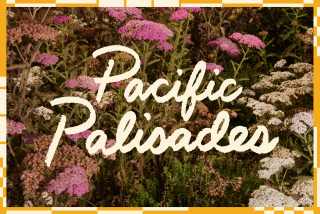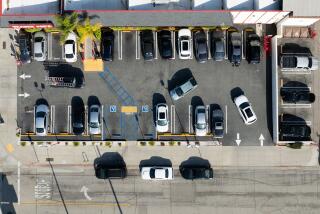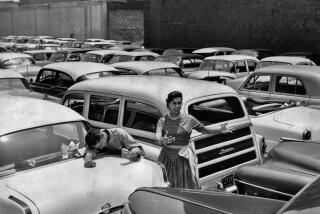Kaanapali Resort Adheres to Plan
- Share via
MAUI, Hawaii — The planning process could not find a more pleasant place to succeed than at the sprawling, splendid Kaanapali Beach Resort here.
As the history of planning has sadly illustrated, long-range master plans for such desirable areas rarely extend beyond the paper on which they are printed.
Instead of guiding land-use development as they are supposed to do in theory, most plans live a relatively short life to satisfy shifting corporate objectives, varying government regulations and fickle community relations, then they are laid to rest in a filing cabinet somewhere.
But the master plan for the 1,200-acre Kaanapali, drafted 25 years ago by Amfac Corp., has proven to be the exception. It perseveres as the principle guide to the sensitive development of a mix of hotels, residences, retail, recreation uses and open space along a three-mile stretch here of Maui’s white-sand west shore.
Also proven with Kaanapali’s economic success--attested to by the resort’s 91% occupancy rate and escalating condominium prices--is that such developments need not milk every last square foot of buildable land; that the protection of views, open space and beaches actually generates value; that good planning, in a word, pays.
That such a plan was drafted in the pre-environmentally conscious 1960s and was followed during the avaricious 1970s and ‘80s is even more impressive when one considers that the original zoning of the Kaanapali area was similar to that Honolulu’s Waikiki Beach, and could have been easily manipulated to allow cheek-by-jowl hotels.
“What we have learned here is that the highest use is not necessarily the best use,” observed David Gleason, who oversees the development of the resort for Amfac. A diversified multinational, the corporation has its roots in Hawaiian land, beginning as a sugar plantation in the mid-1800s and continuing, at present, to manage the use and development there of about 150,000 acres.
Gleason explained that what makes Kaanapali so desirable and adds to its development value are its beaches and views, and, therefore above all, that is what must be protected. “And that is in essence what the master plan does,” he added.
With this in mind the Urban Land Institute recently bestowed on Kaanapali its coveted Large-Scale Recreational Award. Noting that planning for the resort was begun about 30 years ago by Amfac’s Pioneer Mill, the award stated that Kaanapali “continues to flourish as one of the first and most successful master-planned resorts . . . a showpiece for Maui and a prototype for all other destination resorts.”
To date, the plan has guided the development of about 600 of Kaanapali’s 1,200 acres and includes about 3,770 hotel rooms, 1,300 condominium units, a 90,000-square-foot shopping complex and a smattering of restaurants and recreational facilities.
What distinguishes the development of the first 600 acres is not what has been built but what has not been built. About 300 of the acres have been given over to open space, with much of it in the form of two spectacular championship golf courses.
The courses serve a number of purposes. Not only does their sensitive design protect the view plains, give the landscape a verdant carpet and attract the upscale tourist type that pursues the sport, the green fees more than pay for the maintenance.
Golf might be considered by some a boring game, but as a planning tool as used at Kaanapali, it is quite exciting.
A similar mix of open space and development is planned over the next 25 years on the remaining 600 acres. At present, Amfac is negotiating with several corporations that want to develop the last vacant shore-front parcel, a 95-acre site on the north edge of the resort.
Also in planning is an educational and entertainment complex depicting Hawaii’s cultural history that promises to be less hokey and more Hawaiian than the usual offerings.
Guided by the plan and paced by the market, Amfac has pursued the development of the resort in a variety of relationships, including as a developer, partner, seller and manager. Even in sales and long-term leases, however, Amfac has maintained control over the resort--right down to such details as approving the color buildings may be painted--through a set of covenants, codes and restrictions.
As with any plan, there have been disappointments. There are the usual architectural afterthoughts that a particular hotel should have been sited slightly differently or its heights reduced by a floor or two. And one can easily take exception to the dull slab design of the Whaler Condominium or the confused circulation of the chimerical Hyatt Regency Maui or, worse, the gap in the beach-front walk in front of the venerable Sheraton.
But Kaanapali’s most severe planning problem, and one that the plan did not anticipate, is traffic and parking, the twin banes of development, be it on the west shore of Maui or the Westside of Los Angeles.
“We just did not expect that almost everyone who comes here does so by car, even if they don’t need to,” Gleason said. “The fly-and-drive packages of the airlines really created a problem in such destination resorts as ours.”
To ease the parking problem, several garages have been built and the parking space to room ratio in the plan has been increased.
But considered more important is to somehow wean persons from their cars, so there would not be a need for parking. To someone from Los Angeles, the laments of Gleason and aide Wayne Hidani sounded very familiar.
Recognizing that it is not going to solve the problem, only ease it, the resort is trying several approaches. They include providing an attractive free shuttle service within the resort, convenient bus service and slower but picturesque rail service to and from the nearby town of Lahaina, requiring off-site parking by employees, and rerouting an adjacent highway to divert through traffic away from the resort.
Also planned is free shuttle service to and from an expanded west-shore airport that will now be able to handle intra-island airline traffic.
“Hopefully, visitors will begin realizing that they do not need a car, nor its expense to enjoy Kaanapali, or if they want to visit another part of the island (they can) rent a car for the day,” Hidani said.
One would think that persons going on a vacation also would want to get away from the car for a while, especially the estimated 26% of the island’s visitors who, according to the Hawaiian tourist board, come from California.
We did and it was a pleasure. But there was no getting away from observing the effects of planning.
More to Read
Sign up for The Wild
We’ll help you find the best places to hike, bike and run, as well as the perfect silent spots for meditation and yoga.
You may occasionally receive promotional content from the Los Angeles Times.






